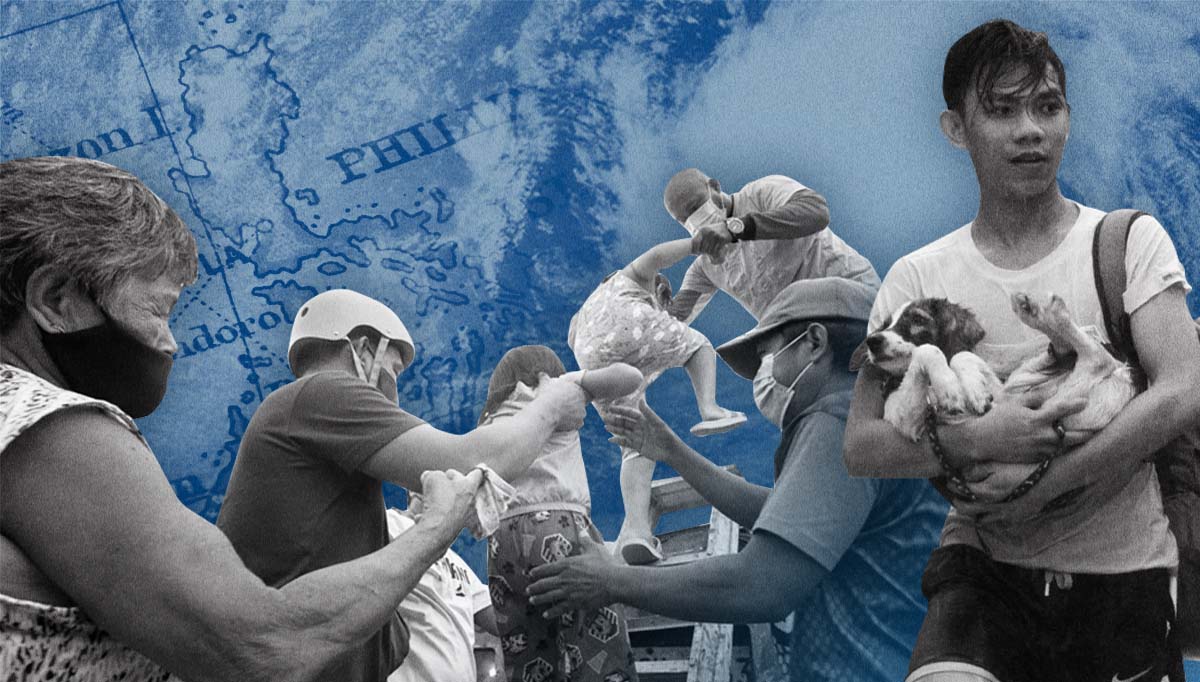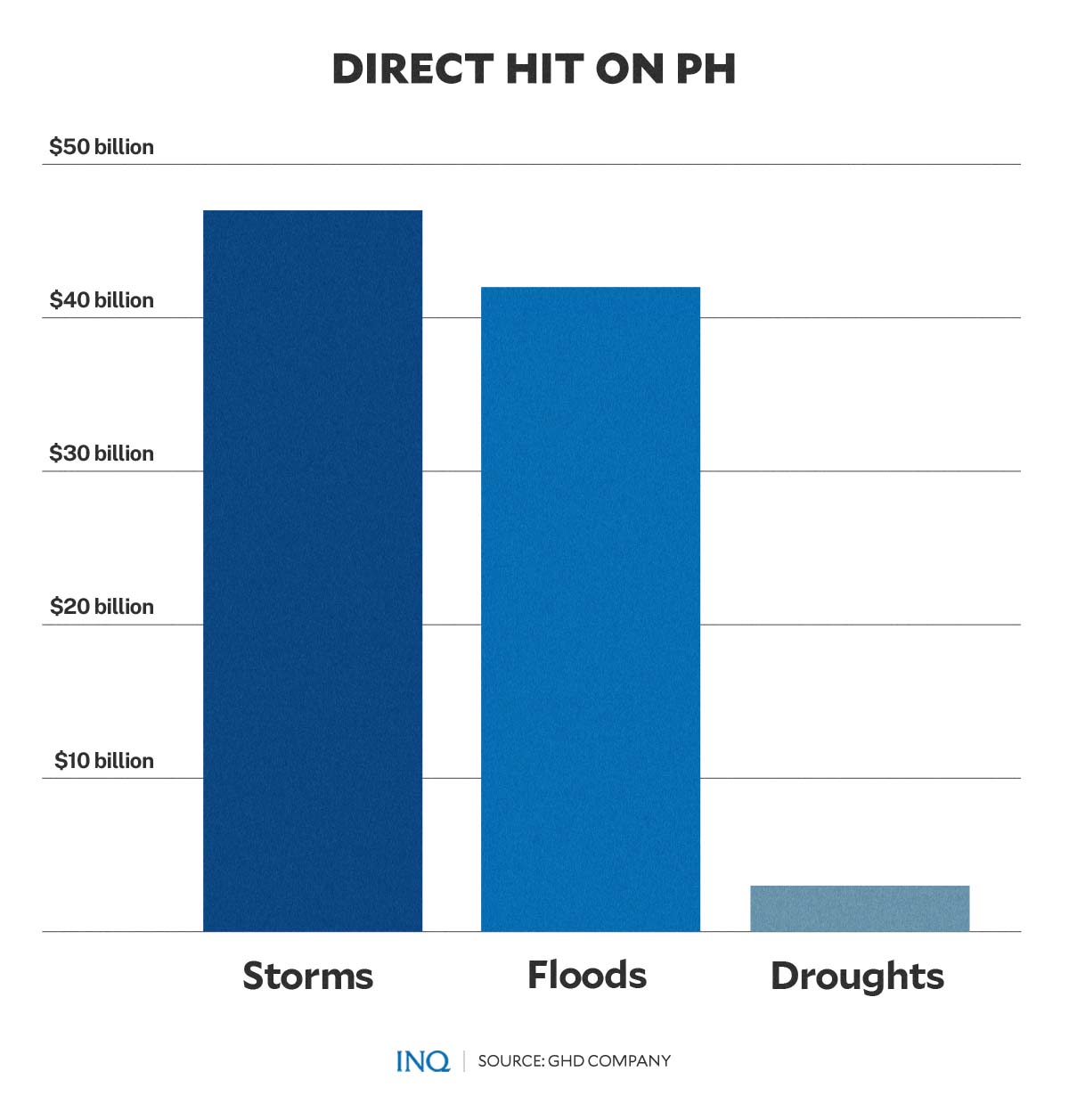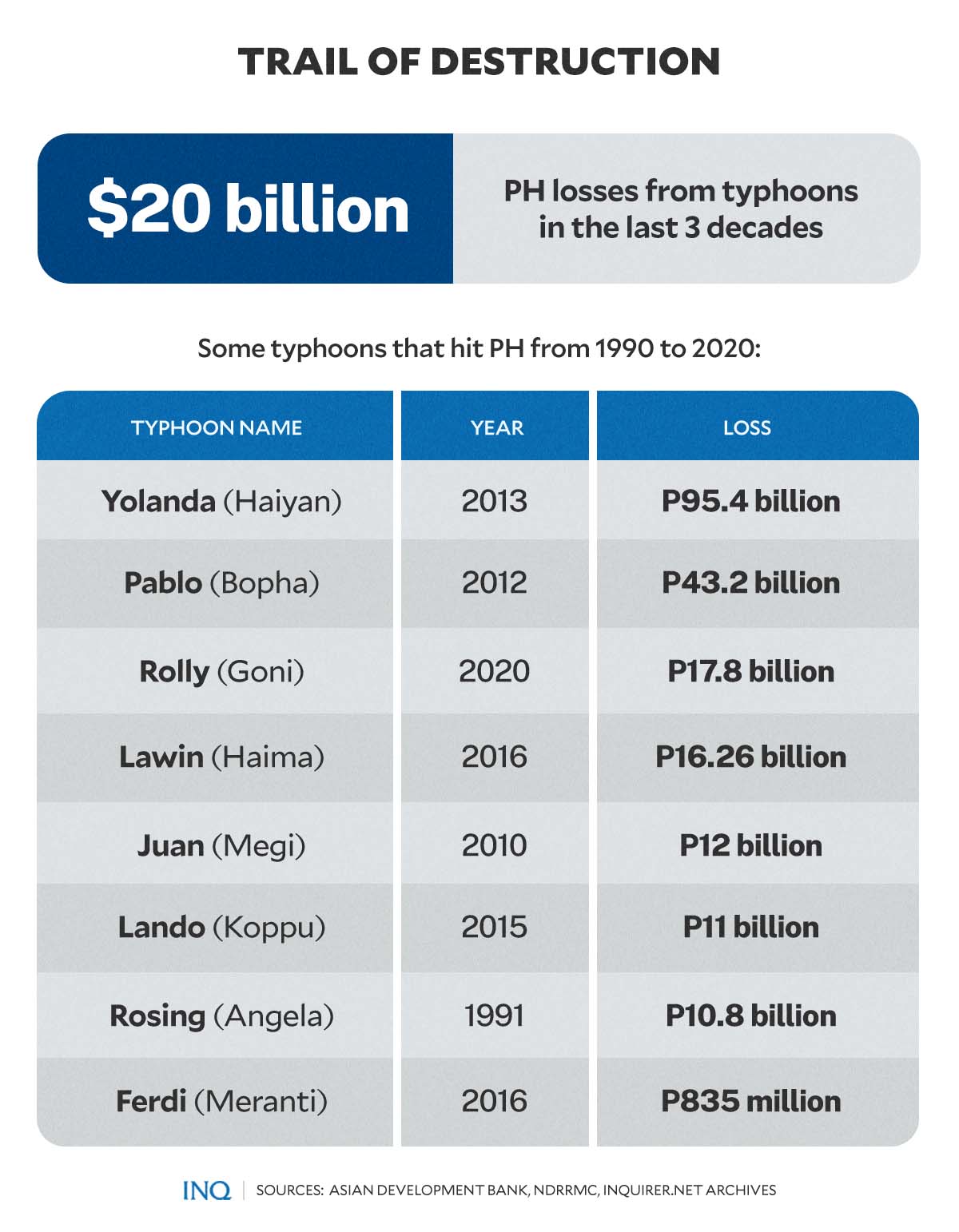PH loss from too much, or zero, water seen to hit $124B of GDP
MANILA, Philippines—The Philippines, which is hit by an average of 20 typhoons every year, is expected to lose $124 billion until 2050 from water-related risks, like strong storms, intense floods and prolonged droughts.
This was revealed by global professional services company GHD in its study, “Aquanomics: The Economics of Water Risk and Future Resilience,” which presented the future effects of water risks on the economies of countries considered highly vulnerable to water-related disasters.
The $124 billion translates to an average annual gross domestic product (GDP) loss of 0.7 percent, especially since out of the 20 typhoons ravaging the Philippines every year, the Asian Disaster Reduction Center (ADRC) said five are highly destructive.
The study covered seven countries, including the Philippines, which was ranked as the fifth most vulnerable to water-related risks and disasters that could “wipe out” $5.6 trillion from the world’s GDP through 2050:
- United States: $3.7 trillion
- China: $1.1 trillion
- Australia: $312 billion
- United Kingdom: $153 billion
- Philippines: $124 billion
- Canada: $108 billion
- UAE: $27 billion
In 28 years, GHD said storms would have the worst direct impact on the economy, with losses reaching $47 billion, while floods and droughts would cost the Philippines some $42 billion and $3 billion.
Article continues after this advertisementRELATED STORY: Rising water stress: Water sources dry up, flood risks rise
Article continues after this advertisementGHD stressed that as climate change intensifies, extreme weather events are expected to worsen, which will result in greater water risk to the Philippines, especially since storms and floods are seen to amount to over 90 percent of direct losses.
‘Agri faces most risk’
The spiel highlighted the possible impacts of extreme weather events on five critical sectors within the economy—agriculture, banking and insurance, energy and utilities, FMCG and retail, and manufacturing and distribution.
While these sectors are diverse, with very different types and levels of water risk, GHD said they are all expected to face significant output losses through 2050, and this will have a significant impact on the millions of people who work across these areas.
- Manufacturing and Distribution: $4.2 trillion
- FMCG and Retail: $1.1 trillion
- Banking and Insurance: $514 billion
- Agriculture: $332 billion
- Energy and Utilities: $237 billion
The agriculture sector in the Philippines could be hit hardest, with an estimated annual output loss of over 5 percent by 2030 and 8 percent by 2050, equivalent to an average annual output loss of $23 billion for agriculture.
Back in 2020, the sector generated a gross value added, the value of output less the value of intermediate consumption, of about P1.78 trillion, which is equivalent to a 10.2 percent share of the country’s GDP.
But GHD stressed that storms and floods can damage infrastructure, crop lands, livestock and farming equipment, while droughts have devastating effects on crop cultivation and livestock farming.
RELATED STORY: 19 provinces brace for drought
Based on data from the 2019 Agricultural Indicators System of the Philippine Statistics Authority, there were 9.7 million Filipinos employed in agriculture—7.46 million males and 2.24 million females.
Billions lost
In the last 30 years—from 1990 to 2020—the Asian Development Bank (ADB) said typhoons had cost the Philippines at least $20 billion and “in the most severe cases, losses can be as high as 23 percent” of GDP.
READ: Typhoons and COVID: How much more can PH take?
This, as the ADB explained that typhoons can reduce economic activity by an average of 1.7 percent in the year they hit. The ADRC said an average of nine typhoons make landfall every year.
READ: PH’s typhoon alley and the trail of destruction it brings
INQUIRER.net looked back at some of the most destructive typhoons that left the Philippines with billions of pesos worth of damage—Yolanda, Pablo, Rolly, Lawin, Juan, Lando, Rosing, and Ferdie.
- Yolanda (Haiyan)
Yolanda, the typhoon that was once considered the “strongest” in the world, ravaged the Visayas in 2013. It affected 14 million people in 44 provinces and left P95.4 billion in damage.
- Pablo (Bopha)
Pablo devastated the Visayas and Mindanao in 2012 and displaced 711,682 families in 34 provinces, especially Davao Oriental, Compostela Valley, Bukidnon, and Negros Oriental. It left damage worth P43.2 billion.
- Rolly (Goni)
Rolly was the strongest to hit the Philippines and the world in 2020. It affected 68.6 million people, with 24.3 million living in the worst-hit provinces, and left P17.8 billion in damage.
- Lawin (Haima)
Lawin hit Luzon, especially Cagayan and Isabela, in 2016, affecting 2.4 million people in five regions. The strongest to hit the province in 2016, it left damage worth P16.26 billion.
- Juan (Megi)
Juan made landfall on the island of Luzon in 2010. It destroyed crop lands, which is the main source of livelihood for people in Cagayan Valley, especially Isabela. It left damage worth P12 billion.
- Lando (Koppu)
Lando, a Category 3 typhoon that made landfall in Aurora in 2015, displaced 13,000 people. The heavy rains and strong winds that it brought had cost the Philippines some P11 billion.
- Rosing (Angela)
Rosing was the third in the consecutive strong typhoons that hit in 1995. It ravaged Luzon, especially Metro Manila, Bicol Region and Calabarzon, leaving damage worth P10.8 billion.
- Ferdie (Meranti)
Ferdie devastated Luzon in 2016, displacing 2,891 families, especially in Batanes. The typhoon, which is considered by the National Hurricane Center and the Joint Typhoon Warning Center as one of the strongest, left P835 million in damage.
No one is safe
GHD said the intensifying threats of water-related risks to agriculture need to be discussed immediately with greater focus on water recycling, desalination and smarter irrigation systems.
Rod Naylor, GHD global water lead, proposed that improved sanitation, water supply and sanitation services should be a key focus to address the accelerating climate risks in the Philippines.
This, as three million Filipinos are currently relying on unsafe water sources while seven million are lacking access to safe water sources since the country faces high levels of water pollution, lack of wastewater treatment facilities and inadequate water supply.
“The Philippine water supply and sanitation master plan calls for a total investment of around P1.1 trillion to achieve universal access to water and sanitation for all Filipinos by 2030,” he said.
Since water is essential regardless of the sector where one belongs, GHD said no one is protected against operational disruption in the face of water-related risks and disasters.
“By focusing on economic impacts, as we have done with this study, we aim to help identify and unlock the social and environmental benefits of tackling water risk head-on,” Naylor said.
“As well as highlighting risk, this study explores some of the ways in which our focus countries can adapt to change and build resilience in their water systems. With water risk on the rise, we need to adopt a proactive, holistic and inclusive approach in understanding and addressing fast-developing challenges.”
GHD likewise stressed that to improve flood management in the Philippines, investments need to be made on the construction of infrastructure in the right areas and working with nature to channel water away.
Based on data from the World Bank, the population affected by heavy flooding in the Philippines yearly is estimated at 176,000 and the expected annual damages at $625 million.
It said the Philippines is highly exposed to flooding, the consequence of severe cyclones and heavy rainfall. The risks from flooding are exacerbated by land-use change such as urbanization and logging.
Help the poor
As the devastating impacts of typhoons “mostly burdens the poor, the marginalized, and the isolated,” the ADB stressed that “without preventive action, the havoc wreaked from the most severe disasters remain not just life-threatening, but also poverty-inducing.”
This, as in the coming years, climate change is expected to worsen the intensity and impact of disasters, especially in places considered at-risk: “For small countries, more extreme events mean more massive damage affecting wider swathes of the population.”
GHD said governments need to put regenerative and nature-based solutions first: “A circular economy approach to water management is crucial. Focusing on water recycling and resource recovery, working within nature’s cycle, will improve long-term sustainability.”
It was stressed by the GHD that the diversity of water risk that exists all over the world means there is no one-size-fits-all solution for improving water resilience.
“Resilience in a region that is facing severe water scarcity can mean something very different when compared to a region where the greatest risk is posed by an over-abundance. It has also become clear that we can no longer rely solely on implementing costly, large-scale, engineered interventions.”
RELATED STORIES:
Super Typhoon Hinnamnor roars into PAR and is now named Henry
Bangkok likely to face massive flooding as in 2011, climate expert says




